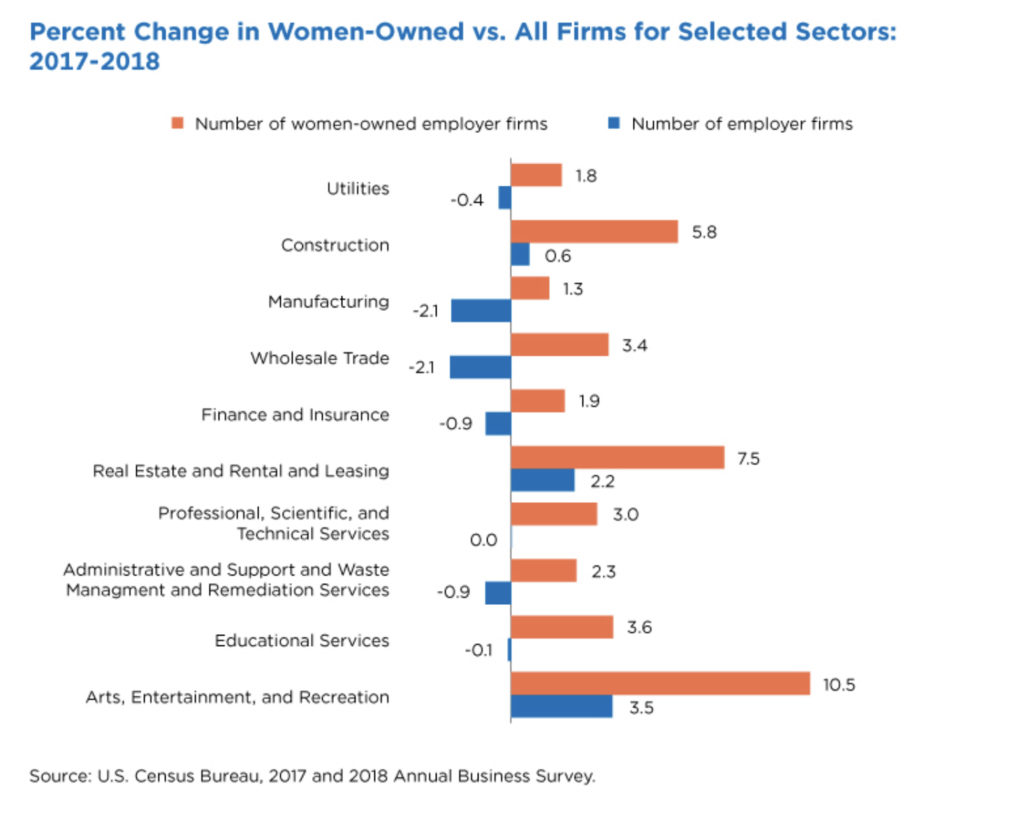A new report by the U.S. Census Bureau revealed that the number of women-owned employer firms increased from 2017 to 2018 by 0.6%. In 2018, there were 1.1 million businesses owned by women, 6,861 more than in 2017. While that percentage is still low compared to the number of men-owned businesses, it’s important to note since the total number of employer firms contracted in the same period.
The increase in women-owned businesses during 2017 took place mainly in ten sectors, with the Arts, Entertainment, and Recreation sector seeing the biggest growth at 10.5%. Other sectors that grew, especially in comparison with the total number of firms, were Wholesale Trade, Administrative/Support and Waste Management/Services, and Manufacturing.

The Census Bureau’s report also found the following data:
- Most women-owned businesses are run by White women (82.8%), non-minority (74.6%), non-Hispanic (92.4%), and non-veteran (98.9%).
- Approximately 16.8% of women-owned firms in 2018 were classified in the Professional, Scientific, and Technical Services sector, compared to 14.3% for all firms in the sector.
- Approximately 19.4% of the 10.1 million employees of women-owned businesses worked in the Health Care and Social Assistance sector in 2018, compared to 14.9% of all business employees.
- In 2018, women-owned firms had an average annual payroll of $38,238 per employee, compared with $54,114 for all firms.
- In 2018, women-owned businesses earned an average of $1.6 million in sales, shipments or revenue; male-owned business earnings were double that at $3.2 million.
- Hawaii was the state with the largest share of women-owned firms at 24.7%, followed by Virginia, Colorado, and Florida.
While it’s always good news when the share of women and men-owned businesses comes closer to parity, the data from this report does not paint the whole picture – especially after the COVID-19 pandemic. An August 2020 report by the U.S. Chamber of Commerce found that women-owned firms were disproportionately hit by the crisis, and they were less likely to anticipate a quick recovery. Trends for all businesses will be very different than in previous years once all the data is gathered and analyzed.
